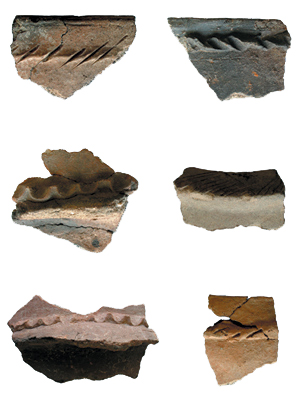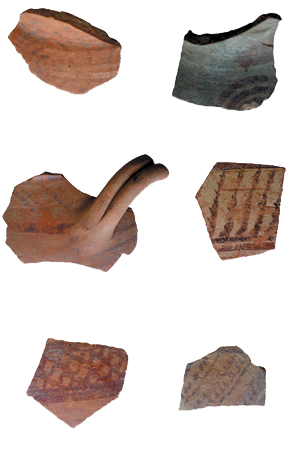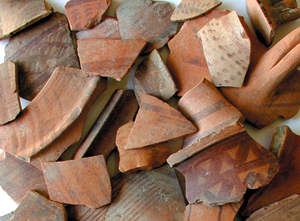The pottery pertaining to the period 650-600 B.C. can be divided in four distinct groups, of which two are from local or regional styles. The first group consists of vases of thraco-macedonian type. They are, for the greater part, cooking vases, all handmade and decorated with incised decoration or with a figner pinched cordon placed on the upper part of the vase. These vases are essentially kitchen ware and there is a great ressemblance between the clays used, tending to show that at least some of these thracian wares were made locally.

Thracian pottery, 7th century B.C.
The second group consists of storage vases, essentially transport amphoras and storage bins, but also a few drinking-vessels. These vases are wheelmade and decorated with geometric designs, many of which are derived from greek designs of the protogeometric and geometric periods (concentric circles, groups of diagonals or zigzags, hatched motifs), all painted with a characteristic purple glaze. Beyond doubt, these wares were the products of regional centers but we still do not know where these were situated, although most must be sought in the chalcidiki peninsula and around the thermaic gulf.

Chalcidic pottery, 7th century B.C.

Pottery from the Chalcidiki peninsula


